1. Why Animals Hitchhike
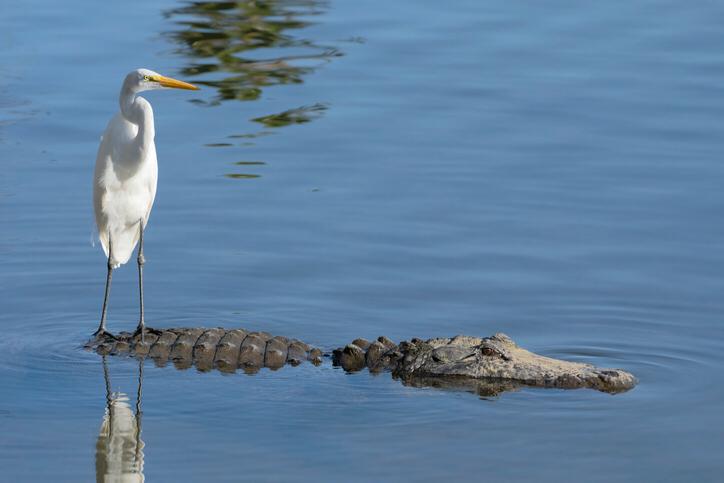
It’s a funny thought, isn’t it? The idea of animals catching a ride on one another, like a natural bus service. But nature is full of surprises, and it turns out that some creatures have mastered the art of hitchhiking. Let’s dive into some of the most fascinating examples of this incredible phenomenon.
Have you ever wondered why some of nature’s smallest creatures seem to be attached to the biggest? It’s all part of a clever survival strategy called phoresy, which is basically the animal kingdom’s version of a rideshare. It’s a simple, energy-saving way for them to move from one place to another, find food, or even get to a safe spot to reproduce. Think about it: why spend precious energy swimming or walking when a much bigger, faster animal can do the heavy lifting for you? This can be especially important for tiny organisms that can’t travel very far on their own. It helps them spread their species to new areas they couldn’t otherwise reach, which is a big deal for their long-term survival. The whole thing shows just how interconnected and resourceful ecosystems really are, proving that even the most unlikely partnerships can thrive.
2. Sharks – Remoras, Pilot Fish, and Lampreys
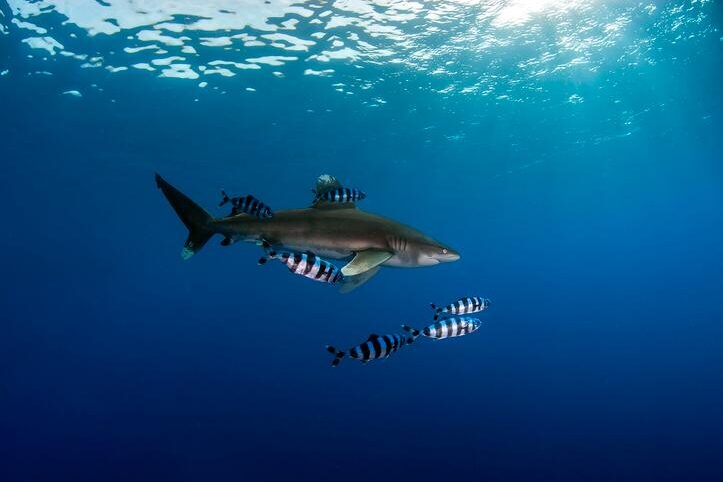
It’s one of the most iconic sights in the ocean—a shark gliding through the water with a whole entourage in tow. The most famous of these hitchhikers are remoras, those sleek fish with a suction cup on their heads that allows them to stick right to the shark’s skin. They don’t just get a free ride; they also snack on scraps from the shark’s meals and any parasites on its skin, keeping both of them clean. Then you have pilot fish, which get their name from their habit of swimming just in front of or alongside sharks. They’re basically the shark’s forward scouts, feasting on leftovers and staying safe from predators that wouldn’t dare get too close to a shark. And while lampreys are less common hitchhikers, some species will latch onto a shark with their toothy mouths, but they’re not just looking for a ride; they’re parasites looking for a meal. This unique dynamic shows that even the king of the sea has its own special set of passengers.
3. Sea Turtles – Barnacles, Limpets, Remoras, and Pilot Fish
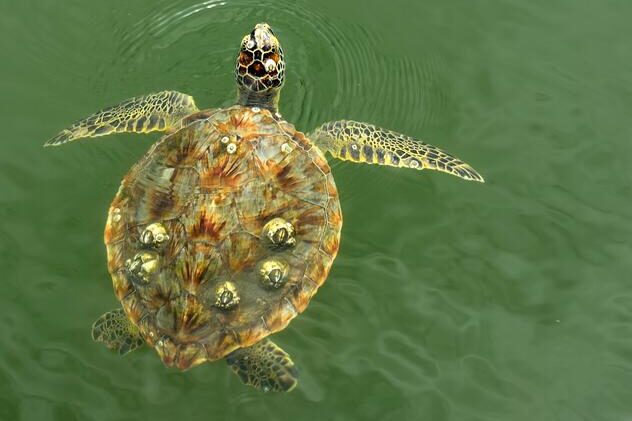
Sea turtles are truly ancient mariners, and their shells often look like floating cities with all the life they carry. It’s pretty amazing how much can hitch a ride on their backs. Barnacles, for instance, cement themselves right onto the shell, getting a free, long-distance ride through the ocean’s currents. They don’t hurt the turtle, but they do get a front-row seat to its epic journeys. Limpets also latch on, using the turtle’s shell as a stable, mobile home. Below the turtle, remoras and pilot fish join the procession, benefiting from the turtle’s constant movement and any food it kicks up. All these passengers turn a sea turtle into a moving ecosystem, and for scientists, these tiny riders can reveal where the turtles have been, offering clues about their long migration routes. It’s a beautiful example of how one creature’s travels can create a whole new world for others.
4. Whale Sharks – Remoras, Pilot Fish, and Jacks
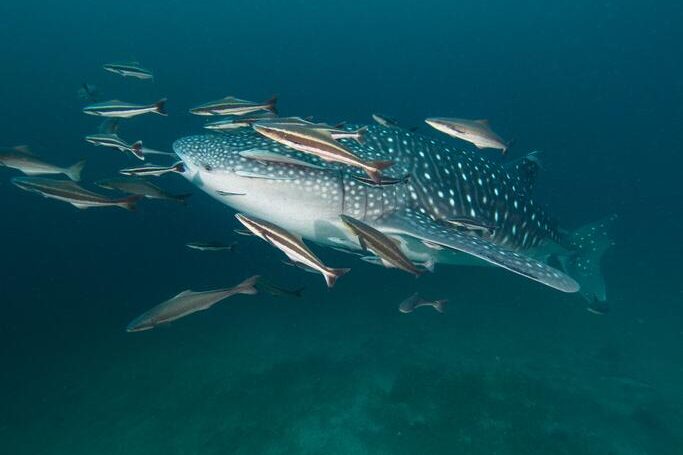
If you’ve ever seen a picture of a whale shark, you’ll notice it’s rarely alone. As the largest fish in the ocean, it’s a natural magnet for hitchhikers. These gentle giants, which cruise slowly while filter-feeding on plankton, are the perfect mobile homes. Remoras cling to their undersides, getting not only a free ride but also a constant supply of food as the whale shark feeds. Pilot fish and juvenile jacks dart in and out of their shadows, cleaning up scraps and staying safe from bigger predators. It’s a bit like a school bus for smaller fish, and the whale shark doesn’t seem to mind at all. This kind of arrangement shows that in the ocean, size matters a lot when it comes to attracting a following. It’s a peaceful, symbiotic relationship where no one gets hurt, and everyone benefits.
5. Dolphins – Barnacles and Remoras
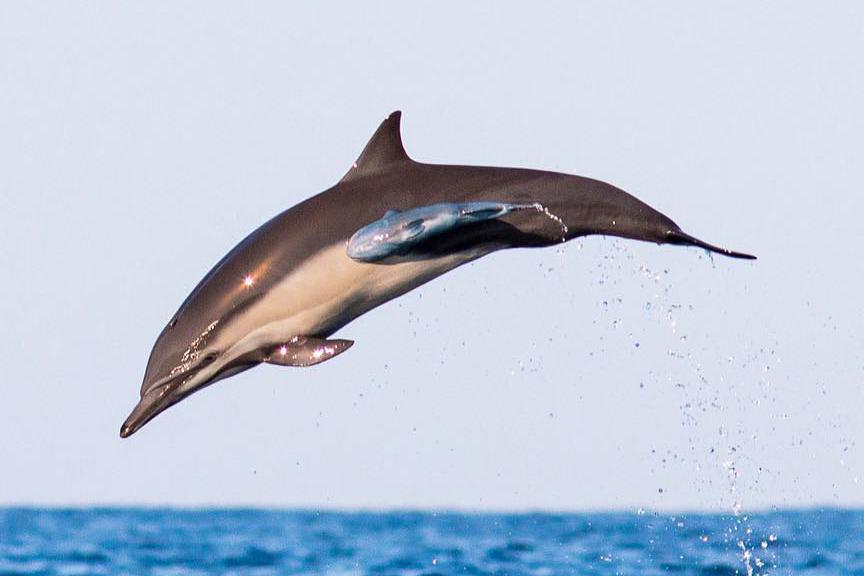
You wouldn’t think a sleek, speedy dolphin would have time to pick up passengers, but they’re not immune to nature’s hitchhiking game. Despite their lightning-fast movements through the water, they can still become hosts for a variety of creatures. Barnacles sometimes manage to attach themselves to a dolphin’s fins or tail flukes, though their stay is often short-lived due to the dolphin’s speed. More common are remoras, which can be seen suctioned to a dolphin’s smooth sides. They’re not just riding along for fun; they’re also getting a lift to nutrient-rich waters where they can find food. While a dolphin’s quickness makes it a challenging host, these persistent riders are a testament to nature’s opportunism. They show us that even the most agile and hydrodynamic of creatures can be a temporary home for another.
6. Whales – Barnacles, Whale Lice, and Algae
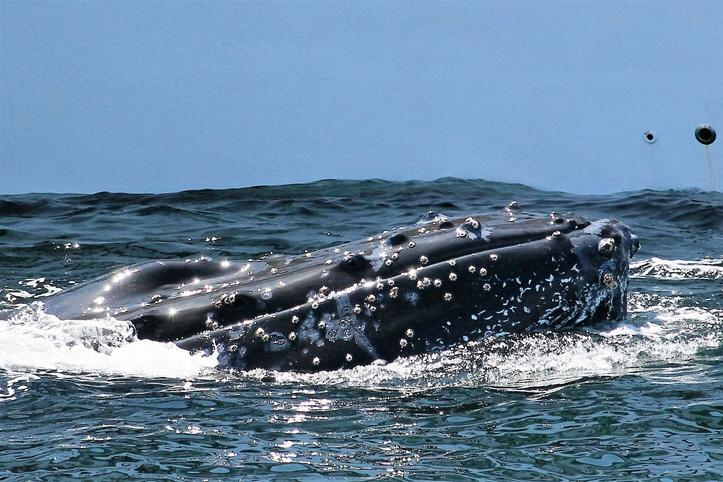
Whales are like the cruise ships of the sea, carrying a whole lot of passengers on their epic journeys. Their massive bodies and slow, deliberate movements make them perfect for hitchhikers. Barnacles are the most obvious, forming thick, crusted colonies on a whale’s skin, especially on their heads and fins. They anchor themselves and get a free, long-distance trip to new feeding grounds. Then there are whale lice, which are tiny crustaceans that live in the creases and scars on a whale’s skin. They clean up dead skin and other debris, which is a big help to the whale’s hygiene. You might also spot patches of algae growing on a whale’s body, giving it a greenish hue. All these riders transform a whale from a single animal into a complex, traveling ecosystem, making their long migration routes a living, breathing spectacle.
7. Manatees – Barnacles and Algae
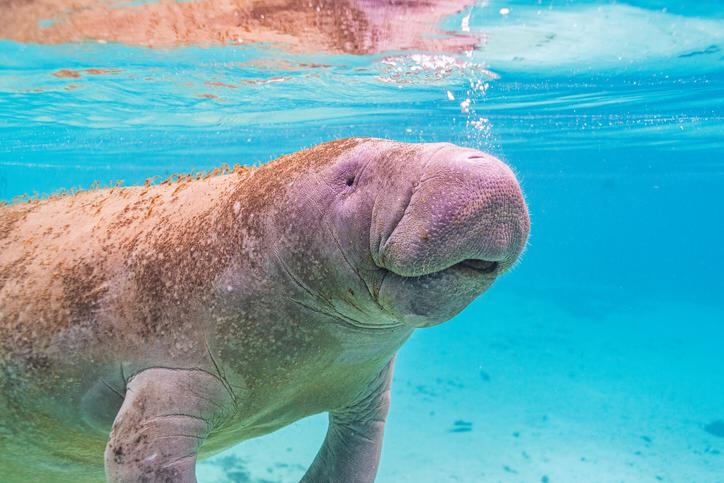
The gentle, slow-moving manatee is another perfect host for nature’s hitchhikers. Their placid nature and leisurely pace make them easy to cling to. Barnacles are often found on their skin, and because manatees spend so much time in warm, coastal waters and rivers, their backs can become a sort of mobile garden for algae, giving them a greenish, mossy appearance. These tiny plant passengers get a free ride and a consistent home, while the manatee often doesn’t even seem to notice. To anyone watching a manatee glide by, it can look a bit like a floating island, covered in a living layer of green. It’s a beautiful, natural partnership that shows how even the most laid-back animals can be part of a vibrant, moving ecosystem.
8. Manta Rays – Remoras and Small Fish
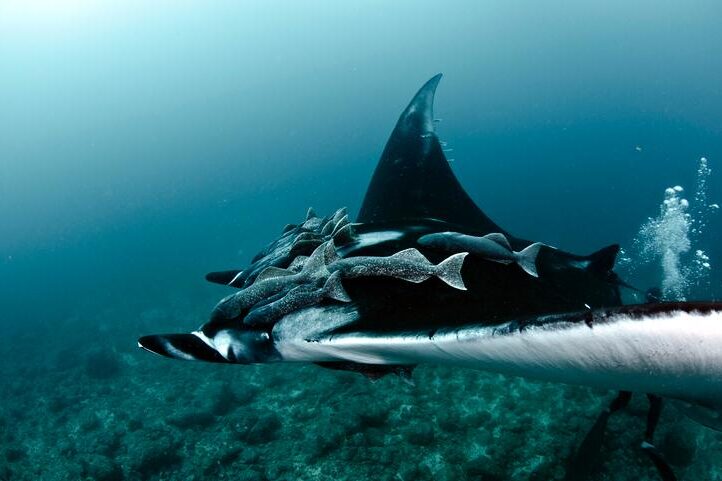
With their giant, graceful wings, manta rays look like they’re flying through the ocean, and they often have a little entourage along for the ride. You’ll frequently see remoras clinging to their undersides, getting a free lift as the ray soars through open water. These little passengers also get to share in the bounty of any food the manta ray stirs up. Small fish, too, love to swim in the ray’s slipstream, gaining a bit of protection and saving energy by letting the massive creature break the water for them. Divers love to watch this unique display of ocean ridesharing, which is one of the most graceful and symbiotic relationships you’ll ever see in the deep.
9. Penguins – Crustaceans and Small Clingers

You might not think of penguins as hitchhiker hosts, given how fast they are in the water, but they have their own tiny passengers. Small crustaceans can sometimes be found clinging to their feathers. These little riders get a free, long-distance ride through the cold, nutrient-rich Antarctic waters. While you might not notice them from a distance, they’re visible upon closer study and prove that even these speedy seabirds can serve as platforms for smaller, opportunistic life forms. It’s a subtle but fascinating example of how even the most unlikely animals can be part of a bigger network of hitchhiking life, bringing together different parts of the ecosystem in unexpected ways.
10. Iguanas – Ticks and Mites
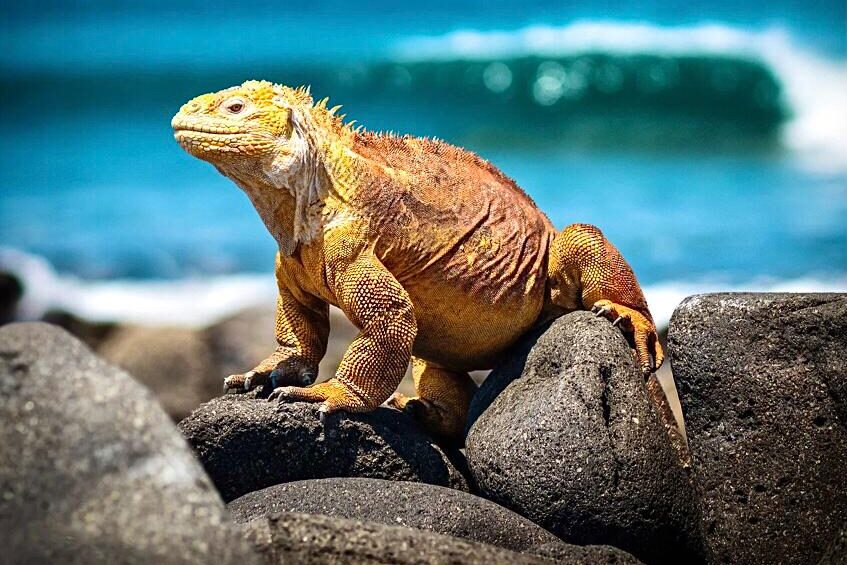
Hitchhiking isn’t just an ocean thing; it happens on land, too. Iguanas, for example, are often unwilling hosts for parasites like ticks and mites. You can often spot these little clingers around the iguana’s mouth, tail, or the folds of its skin. As the iguanas roam through rocky shores and forests, these parasites get a free ride, which helps them spread to new habitats and find new food sources. While it’s not a beneficial partnership for the iguana, it shows how a simple act of movement can create a mobile ecosystem for smaller organisms. It’s a testament to how every living thing, no matter how big or small, plays a part in the constant, interconnected motion of nature.
11. Seals – Seaweed and Algae
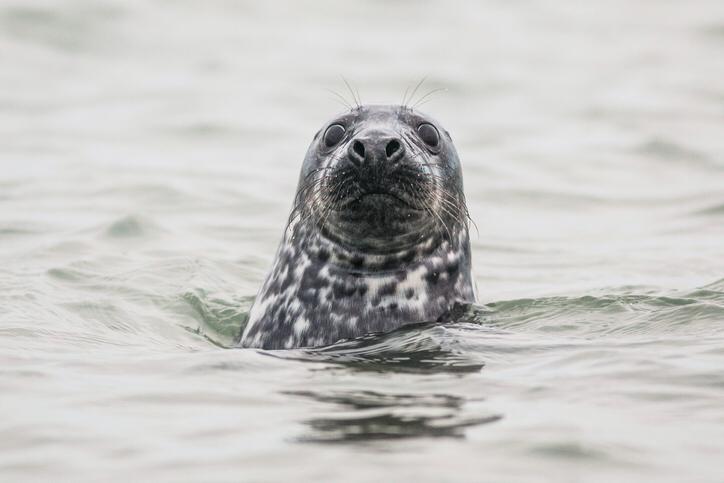
When you see a seal pop its head out of the water, you might notice something a little extra on its fur. Seals often get temporarily tangled in seaweed or have patches of algae on their coats. It might look a bit messy, but it’s a great example of how animals and their environment are constantly crossing paths. These plant hitchhikers don’t hurt the seal, but they do get a free ride as the seal moves through its aquatic home. The sight of a seal draped in kelp might look a bit comical, but it’s a simple, elegant reminder that life is always finding a way to get from one place to another, even if it’s just a temporary lift on a passing animal.
12. Sloths – Algae and Moths
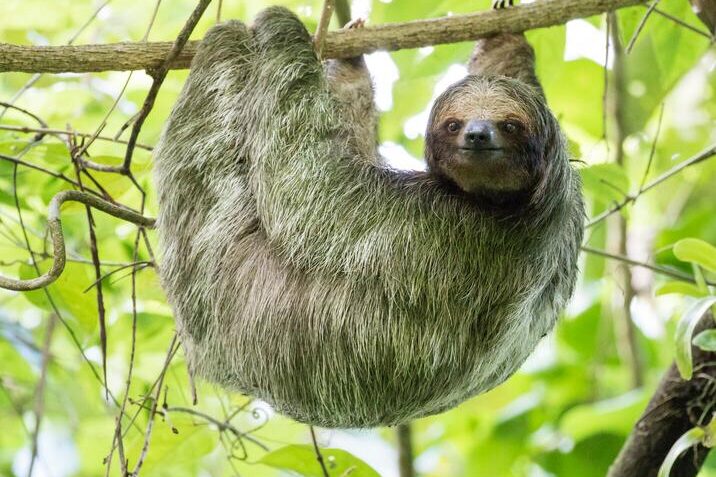
If there was ever an animal designed for hitchhiking, it would be the sloth. These famously slow-moving mammals are basically living ecosystems. Their fur is so thick and slow-growing that it provides a perfect home for algae, which gives the sloth a greenish hue that helps it blend in with the tree canopy. This is a win-win situation: the algae get a stable home, and the sloth gets a natural camouflage. And if that wasn’t enough, moths also live and breed in the sloth’s shaggy coat, using it as a safe haven and a nursery. It’s a wonderful example of a symbiotic relationship, where the sloth’s slow pace creates a unique habitat for a whole community of hitchhikers, proving that the slowest things in nature can often be the most vibrant.
13. Hermit Crabs – Sea Snails and Barnacles
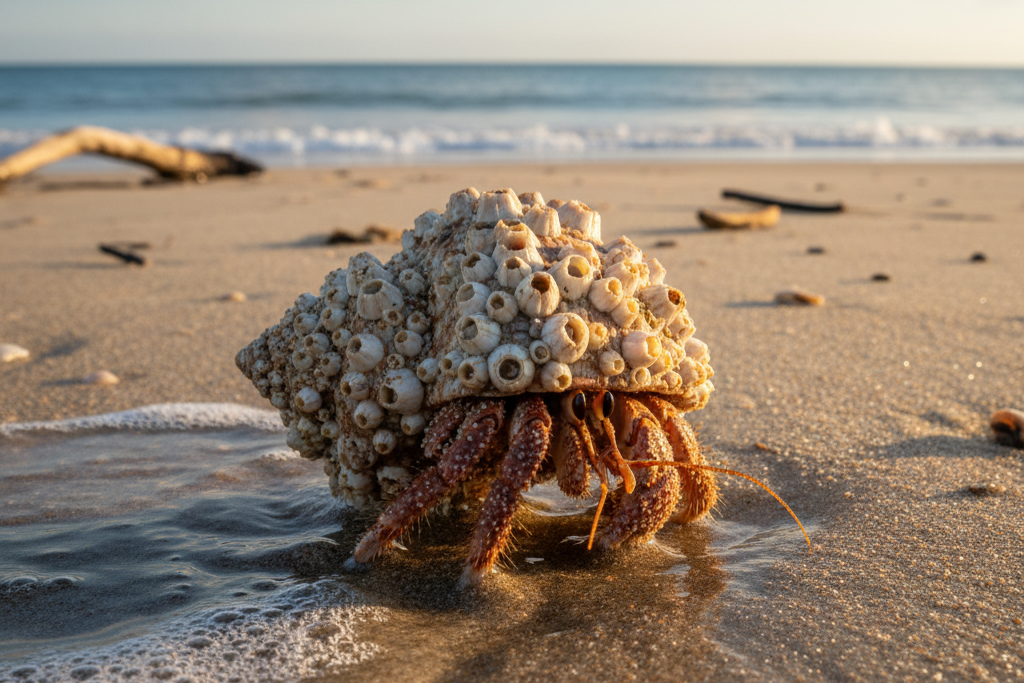
Hermit crabs are already unique because they borrow shells to live in, but those shells often come with a few extra tenants. It’s not uncommon to find a sea snail or a few barnacles attached to a hermit crab’s borrowed home. These little riders get a free lift as the crab scuttles across beaches and reefs. For anyone watching a hermit crab on the shoreline, these tiny passengers make the scene even more lively and interesting. It’s a fun example of how one creature’s borrowed home becomes a mobile community for others, showing that nature’s hitchhiking system is all about making the most of a good opportunity, no matter how small.
14. Crabs – Sea Anemones, Sponges, and Barnacles
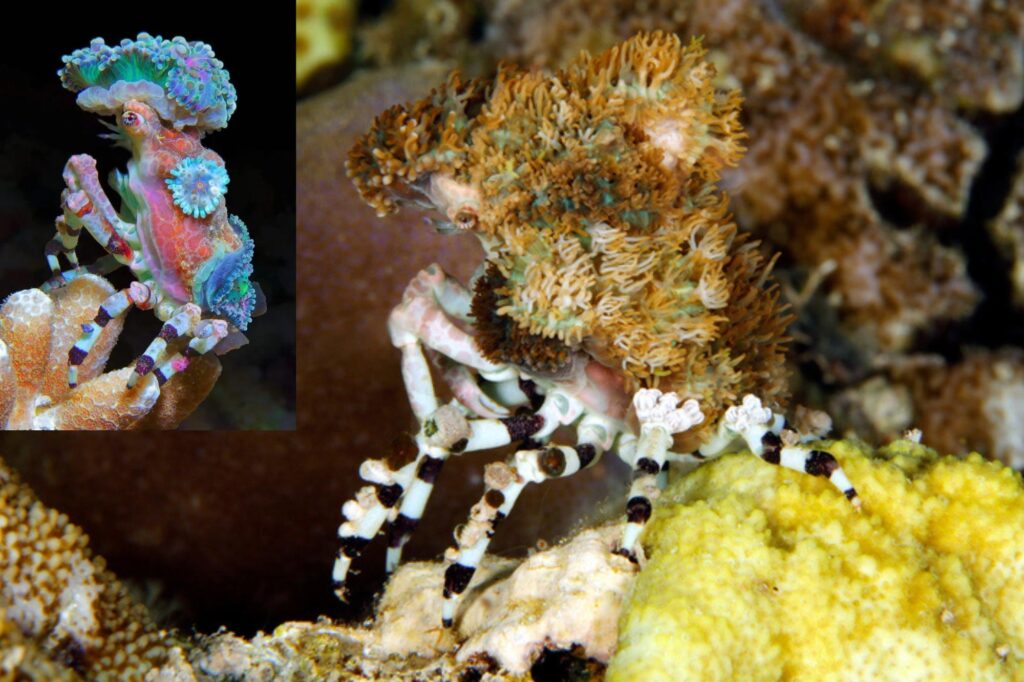
Some crabs are known to take hitchhiking to a whole new level. It’s not just a passive thing for them; they actively decorate themselves with other living things. Some species of crabs will actually attach sea anemones to their shells for defense, using the anemone’s stinging tentacles to protect themselves from predators. Other crabs use sponges for camouflage, blending in with their surroundings. And of course, there are always barnacles freeloading on their shells. These creative partnerships turn a crab into a living work of art, blending survival strategies with some of the ocean’s strangest fashion. It’s a fascinating look at how animals use their hitchhikers to their own advantage, turning a simple ride into a powerful survival tool.
15. Jellyfish – Small Fish and Crabs
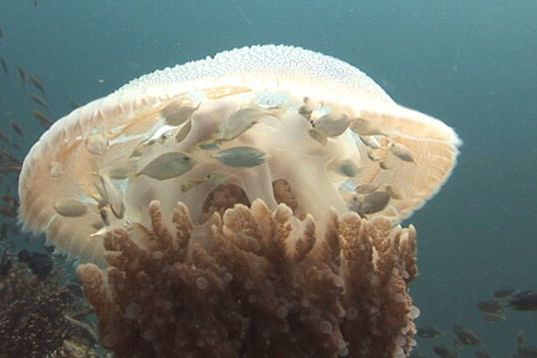
A jellyfish might seem like an unlikely ferry, but for some small creatures, it’s the perfect ride. Small fish will often shelter among a jellyfish’s stinging tentacles, using them for protection from predators that would never dare get so close. It’s a risky business, of course, because one misstep could be the end of the ride, but for many young fish, the reward of safety is worth the gamble. Some small crabs have also been seen clinging to a jellyfish’s bell to cross open water. It’s a testament to the incredible resourcefulness of nature, where a floating creature with a dangerous reputation can become a mobile safe haven for others, proving that even the most fragile of beings can be an important part of a larger ecosystem.
16. Sea Stars – Mussels and Clams
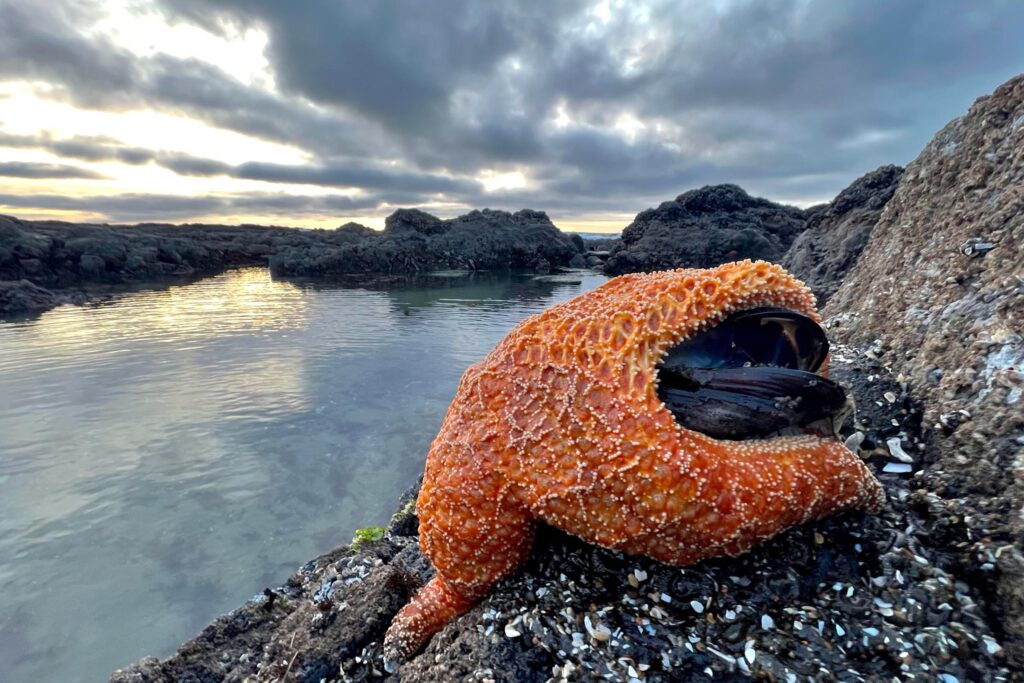
In the world of tide pools, even the slowest animals can be important vehicles. Sea stars sometimes cling to a mussel or a clam in search of a meal, but as the currents move their prey, the sea star gets a temporary ride. While this kind of hitchhiking is usually short-lived, it’s a curious sight for anyone exploring the beach at low tide. It’s a great example of how nature’s ride-sharing can be completely unexpected, proving that even a predator can be a passenger for a little while. This simple act is a fun reminder that in the wild, every creature, no matter how deliberate its movements, can find itself relying on another for a little unexpected transportation.
17. Octopuses – Hitching on Sharks or Fish
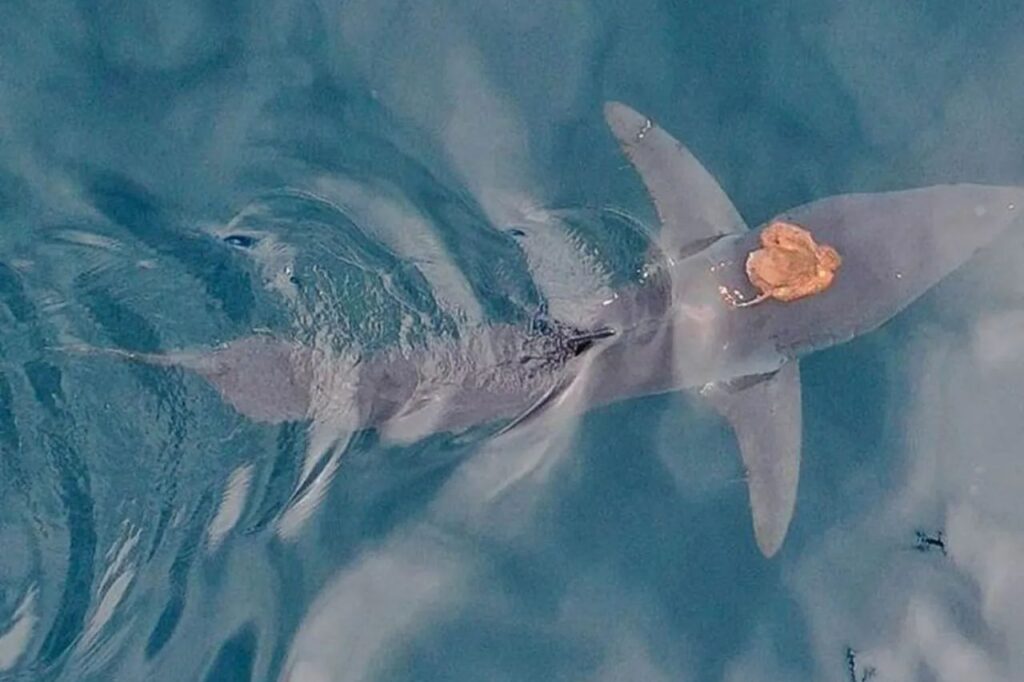
Normally, you’d think of an octopus as a masterful hunter, but they can be hitchhikers, too. There have been a few documented cases where an octopus was seen clinging to a much larger animal, like a shark or a fish. Scientists aren’t entirely sure why they do it—some think it might be a temporary attack, while others believe it’s an opportunistic way to get a free ride across open water. Either way, it shows how incredibly adaptable and clever cephalopods are. They’re not just masters of camouflage and escape; they’re also masters of improvisation, willing to take a chance on a big, fast-moving ride to get where they need to go in the unpredictable underwater world.
18. Horseshoe Crabs – Barnacles and Limpets
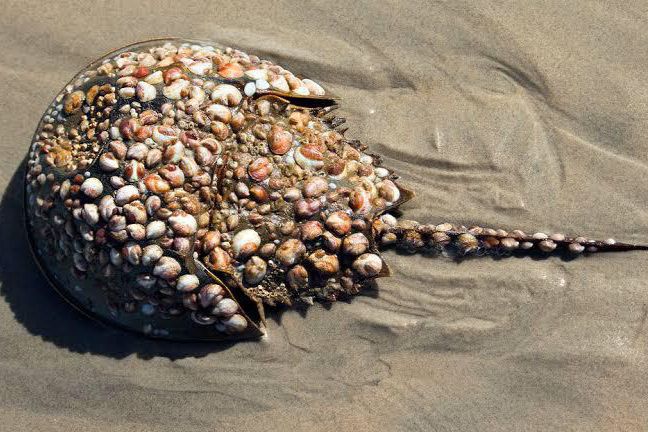
Horseshoe crabs are like living fossils, ancient survivors that have been around for millions of years. And for just as long, they’ve been carrying passengers. It’s common to see their armored shells covered in barnacles and limpets. These riders get a free ride through the tidal flats while the horseshoe crab plods along, unbothered. To observers, the hitchhikers look like badges of honor, living proof of a partnership that has lasted for ages. It’s a testament to the enduring nature of these relationships, showing how even the oldest creatures can play an important part in creating a home and a mode of transportation for others.
19. Birds – Feather Lice and Crustaceans
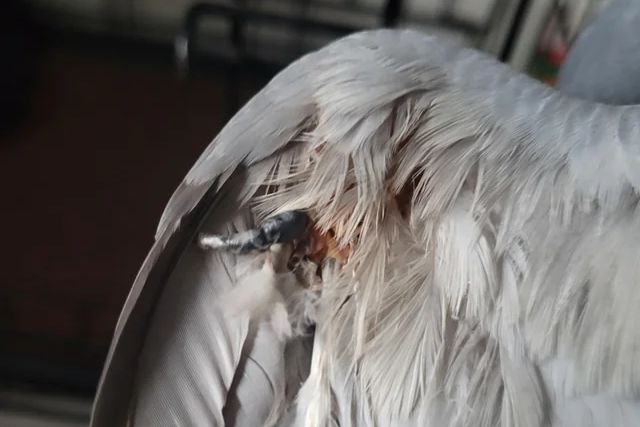
Birds are nature’s ultimate travelers, and because they migrate vast distances, they’re also incredible taxis for smaller organisms. Feather lice, for instance, can often be seen by the human eye and get a free, aerial lift across continents. Some seabirds also pick up small crustaceans while they dive for food. These passengers get a free ride to new food sources and habitats. It’s one of nature’s most efficient networks, where tiny, almost invisible creatures get to see the world from above, all thanks to their unsuspecting bird hosts. It just goes to show that even the most graceful creatures in the sky can be part of the hustle and bustle of nature’s transportation system.
20. Beetles – Mites and Tiny Insects
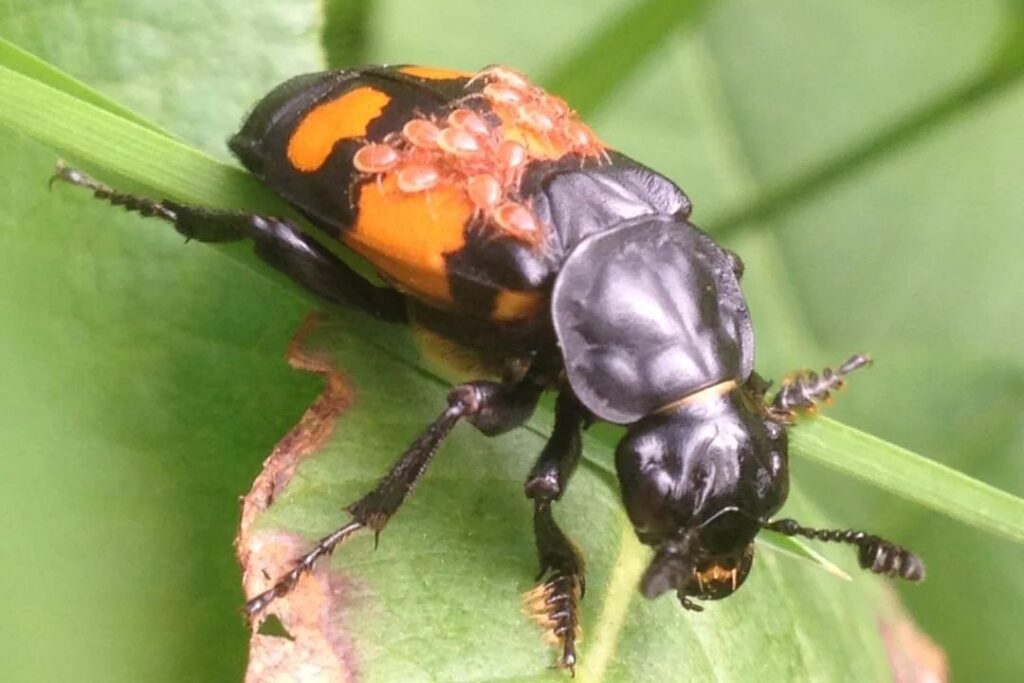
On a smaller scale, beetles are frequent transport for mites and other tiny insects. These little riders cling to the beetle’s hard exoskeleton, getting a free lift to new food sources and habitats. While you might need a magnifying glass to see some of them, these tiny hitchhikers turn a beetle into a miniature bus for freeloaders in forests, grasslands, and even your backyard. It’s a great reminder that hitchhiking happens all around us, even in the smallest of ways. It shows that in nature, no creature is an island; everyone, no matter how small, is part of a bigger network of movement and connection.
21. Frogs – Beetles and Aquatic Hitchhikers
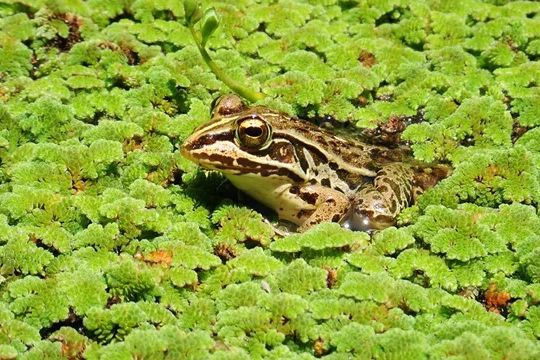
In the steamy rainforests, you can find a surprising partnership. Beetles have been spotted clinging to frogs to cross rivers and wetlands. Since many beetles aren’t strong swimmers, they rely on amphibians as living rafts to get to the other side. The frogs, for their part, are completely unaware they’re carrying passengers, hopping along while providing a vital service to creatures that would otherwise never survive the journey. It’s a simple, fascinating example of how animals can unexpectedly help one another, even without knowing it. It’s a great little reminder that in nature, you never know who’s going to get you across the finish line.
22. Ants – Aphids
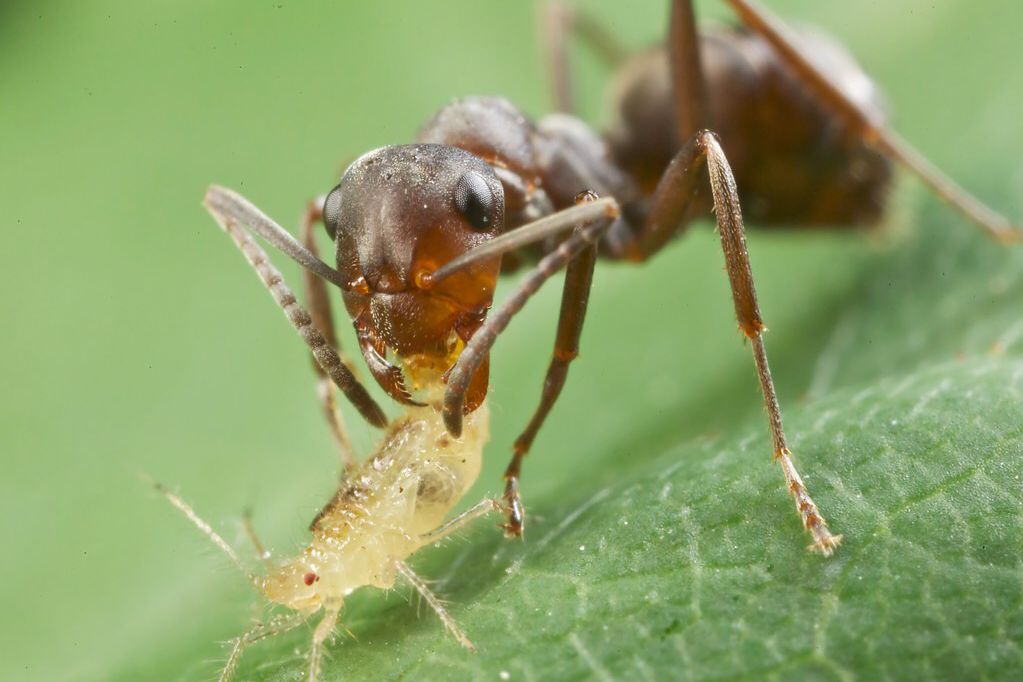
This one is a little different because it’s a deliberate act of hitchhiking. Ants actually carry aphids to new plants. In return for a sugary liquid called honeydew that the aphids secrete, the ants provide them with protection from predators and transport to fresh new feeding grounds. This partnership is so common you can see it in gardens all over the world. It blurs the line between freeloading and mutually beneficial teamwork, showing that hitchhiking can sometimes be a win-win situation for everyone involved, proving that teamwork makes the dream work, even in the insect world.
23. Rodents – Cockroaches and Fleas
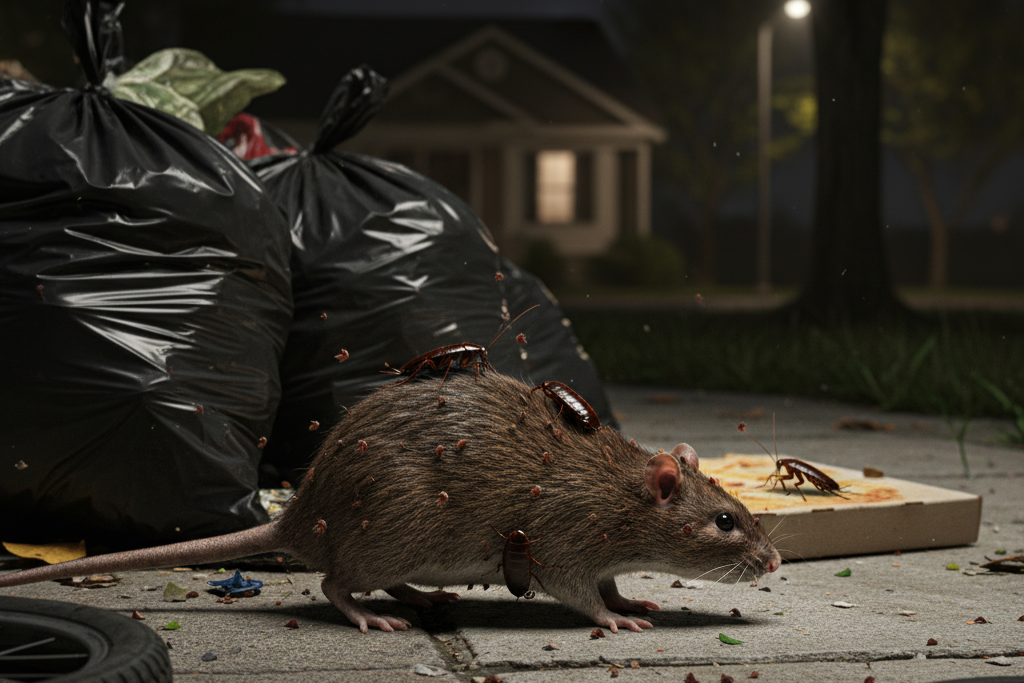
You might not want to think about it, but in cities and forests, rodents are very frequent hosts. Fleas cling to their fur for survival, while cockroaches sometimes ride along in search of food. These unwelcome passengers thrive in human-dominated environments, proving that nature’s ride-sharing isn’t limited to the wilderness. It’s a testament to how adaptable these little creatures are, and how they’ve found a way to use our own movements to their advantage, showing that the most surprising hitchhikers can be found right in our own backyards.
24. Humans – Ticks, Lice, and Mites

And finally, we’re not exempt from the hitchhiking game either! We are unwilling participants, acting as taxis for all sorts of tiny passengers. Ticks can latch onto us during a hike, lice spread in our hair, and mites live on our skin. With our global travel and constant movement, we’ve become one of nature’s most efficient carriers, transporting countless tiny passengers across continents every single day. This just goes to show that hitchhiking isn’t just a quirky animal behavior; it’s a fundamental part of how life moves and spreads across the planet. We’re all part of this incredible, interconnected web of life, and in some small, surprising way, we’re all helping each other get a ride.
This story 24 Eye-Opening Facts About Nature’s Ultimate Hitchhikers: When Animals Catch a Ride was first published on Daily FETCH


